Imagine a shimmering turquoise lagoon in the heart of a secluded luxury resort. Man-made lagoons are quickly becoming a stand-out feature for large-scale, high-end real estate developments and hotel projects. They offer more than just a beautiful view; these lagoons provide a place for recreation with a variety of activities and services, transforming any development into a slice of paradise.
Fluidra, a global leader in aquatic projects, has perfected the art of creating these stunning oases. Their advanced systems ensure that each lagoon is not only a stunning aesthetic feature but also meets the highest standards of water treatment, safety, and sustainability.
But it’s not just about aesthetics; it’s about business, too. These lagoons are a significant draw for potential guests and residents, increasing property value and generating a strong return on investment.
This guide explores the design and technical aspects of Fluidra’s man-made lagoons, including water treatment processes, disinfection strategies, and system optimization. Whether you’re an architect or an engineer involved in real estate or hospitality developments, this guide will provide the knowledge you need to create a man-made lagoon.
Dive deeper with the eBook
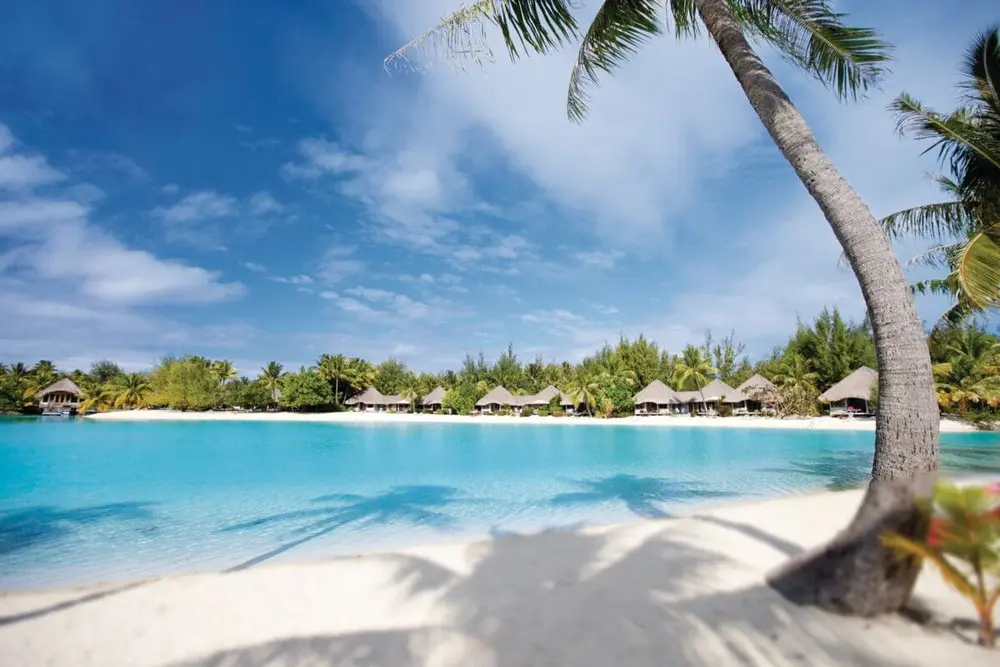
An outstanding centerpiece
Man-made lagoons are ideally suited for both hotel and resort developments, as well as new and existing residential complexes. Lagoons offer a highly marketable amenity that attracts tourism and enhances the guest experience, adapted to different geographical situations and climatic conditions, such as deserts, mountains or cities.
For architects and engineers, the flexibility in lagoon design —whether opting for freshwater or saltwater systems—allows for customization based on the location and target market of the project. The strategic integration of technical systems ensures that operational efficiency and sustainability is maintained while the aesthetic appeal of the lagoon becomes a key draw for visitors and residents.
Before getting into the technicalities, we’ll outline the case for making man-made lagoons the center of hospitality and real estate development.
1. Aesthetic and recreational value
From an architectural and engineering perspective, man-made lagoons offer unparalleled flexibility in landscape design and user experience. Beach zones offer a space for both sports and relaxation as if you were truly on a natural oasis. The pristine water quality and controlled circulation ensure that the lagoon remains aesthetically appealing and functionally efficient.
Fluidra Lagoons offer safe and serene environments for families to enjoy, free from strong currents, sharks, jellyfish, or other environmental hazards. These tranquil waters provide the perfect setting for swimming, sunbathing, kayaking, wakeboarding or paddle surfing. For those seeking a more leisurely activity, the promenade and restaurant areas offer breathtaking views and water shows.
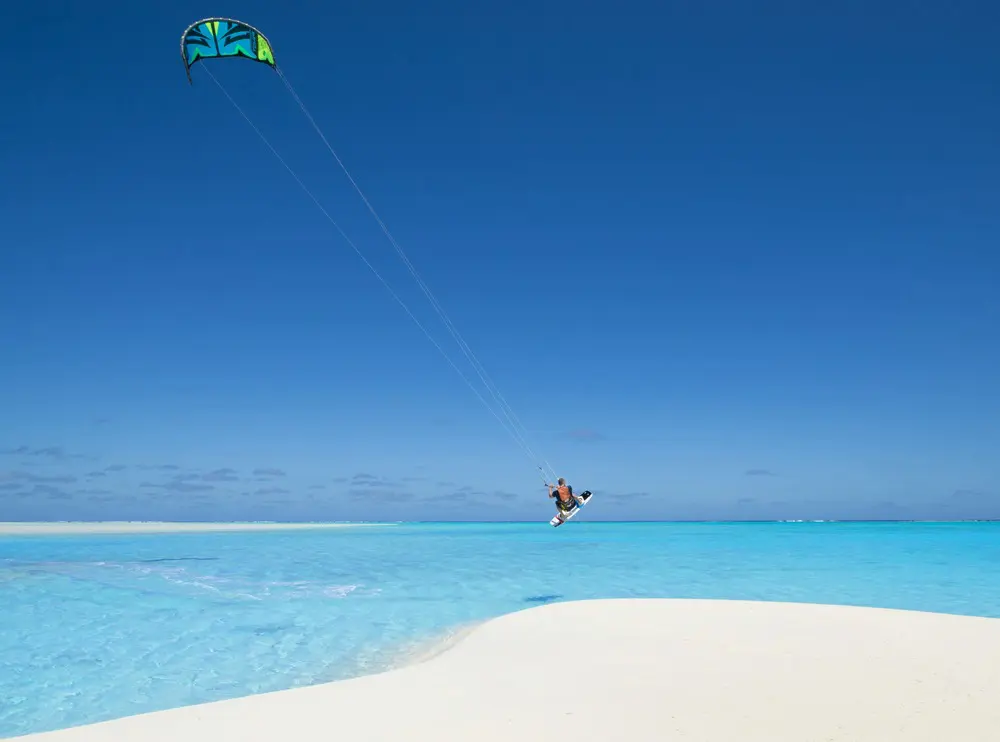
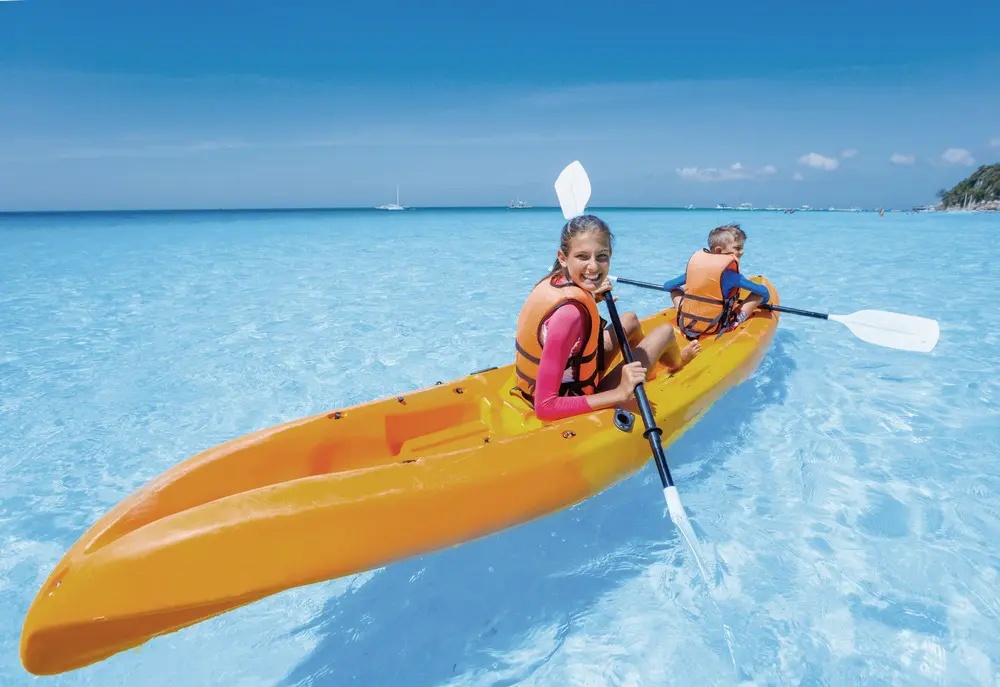
2. Increased business opportunities and real estate value
For real estate and hospitality developers, a man-made lagoon can significantly enhance the revenue, marketability, and value of a property. The lagoon is a unique luxury feature that attracts users, buyers, and investors looking for premium amenities. Studies have shown that both surrounding services and properties near water features typically command higher revenue, making lagoons a strategic investment for developers seeking to differentiate their projects from competitors. Moreover, it encourages visitors to increase the length of their stay, leading to increased profitability.
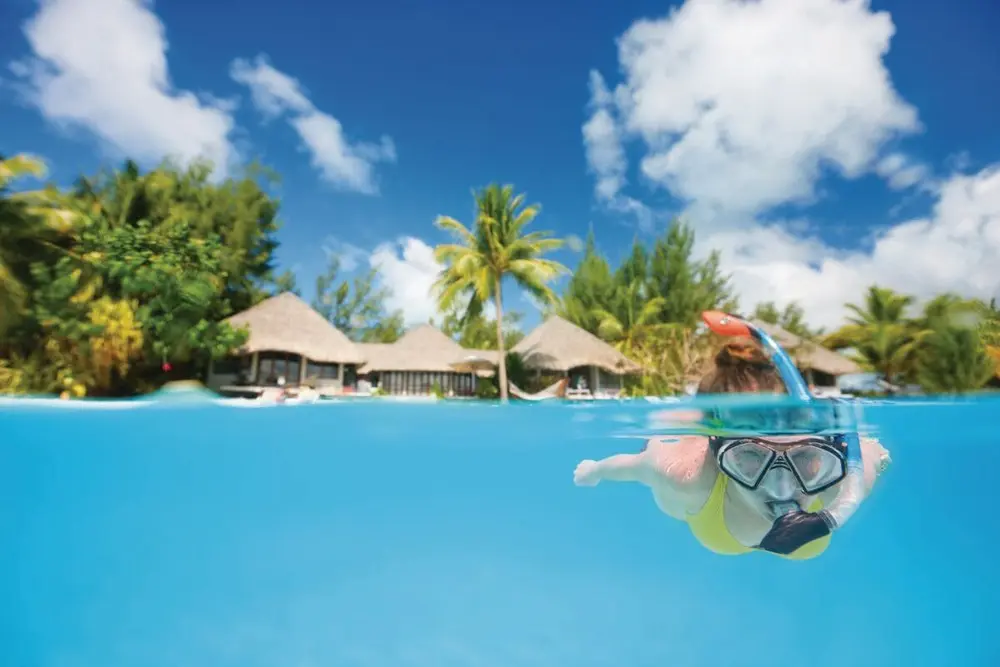
3. Space and energy efficiency
Fluidra’s innovative use of smaller, decentralized technical rooms and optimized piping systems significantly reduces the space required for mechanical installations. This not only maximizes the available land for development but also decreases the lagoon’s overall energy consumption, making the project more sustainable and cost-effective over its lifespan. For architects and engineers, this represents an opportunity to integrate high-performance systems without compromising space or aesthetic quality.
Regarding operations, these lagoons offer operators peace of mind. It’s a complete open solution with no ownership fee, low operational and construction costs, and ease of installation and management.
4. Sustainability and water conservation
Fluidra’s water treatment systems, particularly our high-efficiency pumps and filtration systems, offer significant water conservation benefits. The low water consumption of these filters, combined with the energy-efficient design of the pumping and circulation systems, reduces the lagoon’s environmental footprint. This makes man-made lagoons a viable option for projects focused on sustainability and green building standards, balancing luxury and environmental responsibility.
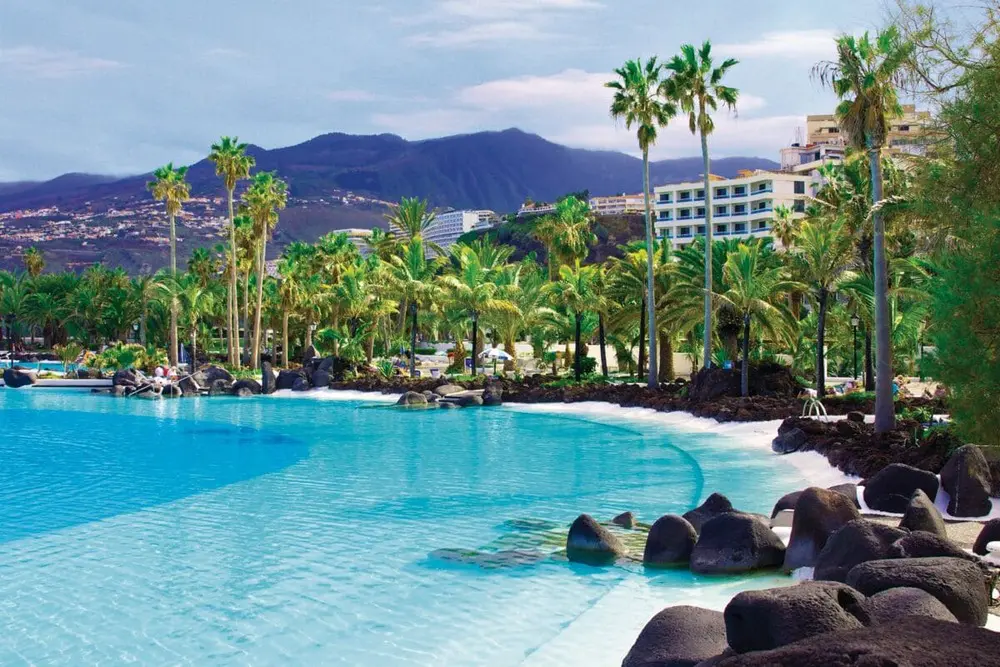
Designing and building man-made lagoons
Creating a successful man-made lagoon requires careful consideration of various design and engineering elements. From the shoreline to the placement of technical equipment, every aspect plays a crucial role in the lagoon’s functionality, aesthetic appeal, and long-term sustainability. Let’s explore some of the key design and engineering considerations involved, guided by Fluidra expertise.
1. Beach zones and perimeter walls
Fluidra’s man-made lagoons feature distinct solutions to create an appealing shoreline, providing both beach zones and “pool-type” perimeter walls. This allows us to offer flexible design options for various landscapes and architecture. To accommodate a wide range of activities, Fluidra lagoons usually feature a maximum depth range between 1.5 and 2 meters, with a waterproof PVC liner on the bottom.
The beach zones replicate a natural shoreline, providing a gradual slope into the water, which enhances user safety and creates an inviting transition from land to water, invoking the feeling of a naturally occurring paradise. This solution provides watertightness with a double layer of protection, formed by a concrete base and a liner installed on top of the concrete or underneath.
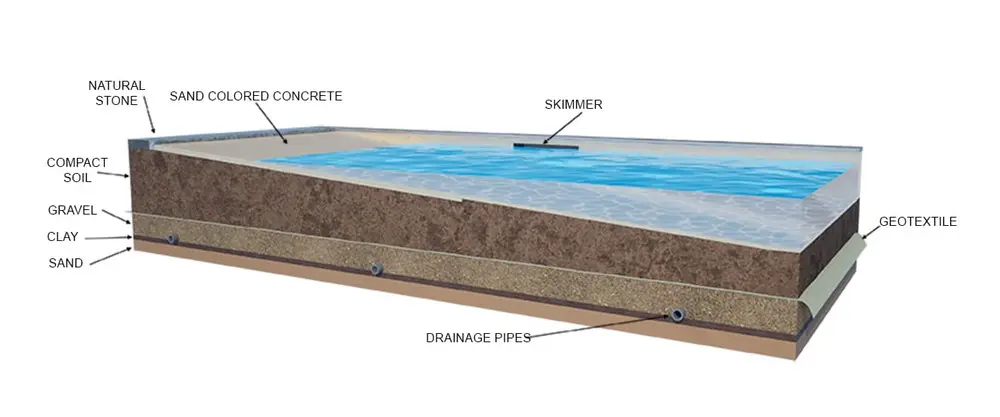
The perimeter walls, typically located in deeper sections, provide structural integrity, supporting the lagoon’s shape while helping to define specific areas for different uses, such as swimming or wading, as well as restaurant and bar areas. This solution is composed of a concrete wall and an optional stone coping.
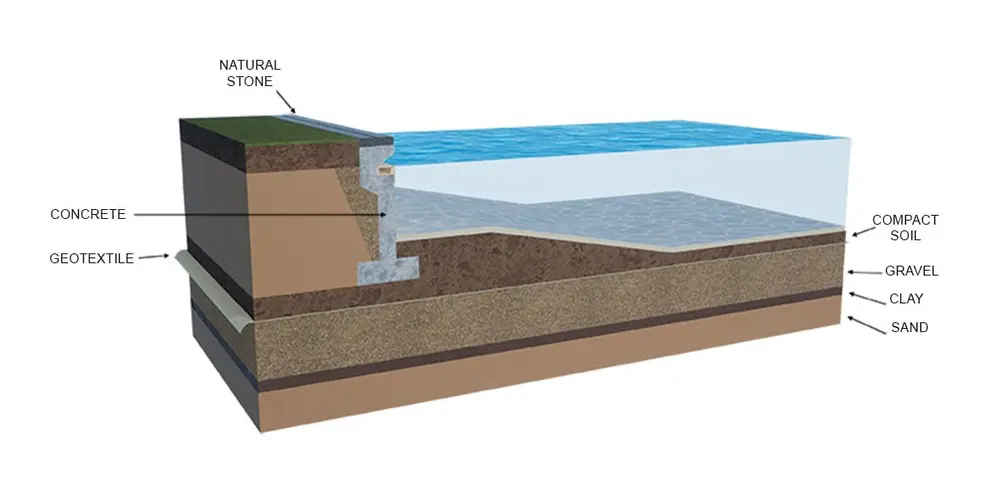
These design elements are integral to the lagoon’s functionality and aesthetic, giving architects and engineers flexibility in layout while ensuring the stability and longevity of the lagoon structure.
2. Optimized piping and water return systems
A critical aspect of Fluidra’s engineering innovation is the optimized piping system, which improves hydraulic efficiency and reduces energy consumption. Wall and bottom nozzles circulate water throughout the lagoon, ensuring complete and uniform water circulation. This even distribution of water helps to avoid stagnation and maintains water quality, supporting the overall performance of the lagoon’s filtration and disinfection systems.
By optimizing the piping layout, Fluidra minimizes pressure losses, which is particularly important in large-scale projects. This approach results in a more energy-efficient system, reducing operational costs while ensuring the water’s pristine condition.
3. Strategically located technical rooms
Fluidra strategically places multiple smaller technical rooms around the lagoon. This is a key engineering strategy to house critical equipment such as pumps, filters, and control systems. By distributing technical rooms in proximity to specific lagoon areas, Fluidra reduces the length of piping required, further decreasing friction losses and energy use.
Additionally, these technical rooms are thoughtfully integrated into the surrounding landscape to remain hidden from view, maintaining the lagoon’s visual appeal while ensuring easy access for maintenance and operational efficiency. This approach is particularly beneficial in high-density developments, where space is at a premium and mechanical systems need to be discreet.
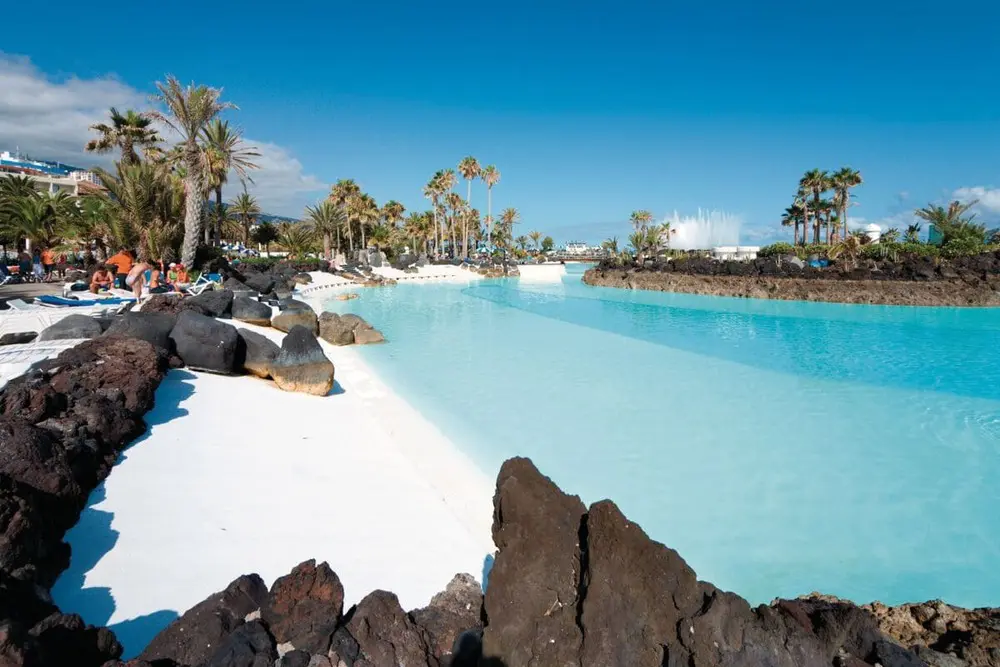
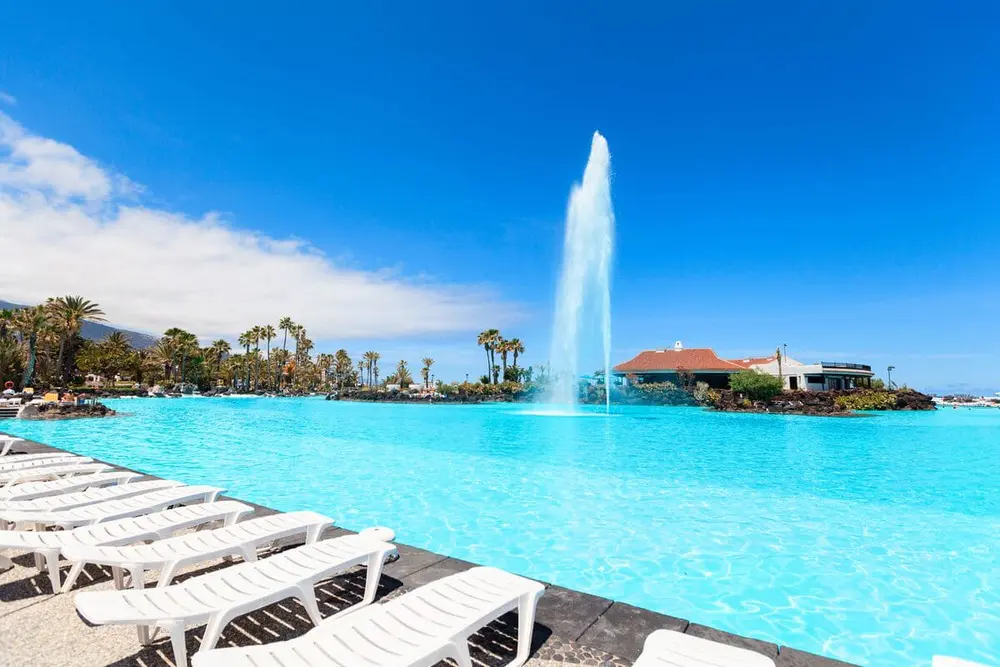
Maintenance and management
Maintaining pristine water quality in a man-made lagoon is key to getting the most out of your investment. Fluidra deploys a comprehensive approach to maintenance and management, encompassing water recirculation, filtration, disinfection, and replenishment. Here, we’ll outline the technologies and strategies that ensure the long-term health and beauty of Fluidra lagoons.
1. Water recirculation and filtration systems
Fluidra’s man-made lagoons use an advanced aspiration and impulsion system to maintain the highest water quality standard. Water is aspirated through a combination of surface skimmers and bottom drains, ensuring both floating debris and settled sediments are removed. Typically, around 70-80% of the water is aspirated from the surface via skimmers, which capture leaves, insects, and other floating contaminants. The remaining 20-30% is drawn from the lagoon floor via bottom drains, preventing the buildup of heavier particles and ensuring complete water circulation.
Once collected, the water is directed to the filtration systems, including sand or regenerative media filters (e.g., perlite). Sand filters combine water and air during the backwashing process, reducing water waste by up to 50% compared to conventional systems. Regenerative filters use significantly less water—around 2 liters per filter per backwash cycle—making them a highly sustainable option. The use of flocculation systems is also a great addition to enhance the filtration systems’ performance.
After filtration and disinfection, the water is returned to the lagoon through impulsion nozzles located along the walls and base of the lagoon, promoting thorough circulation and preventing dead zones. The entire water treatment process, from aspiration through disinfection, typically takes 6 hours. However, this can vary depending on the size and design of the lagoon.
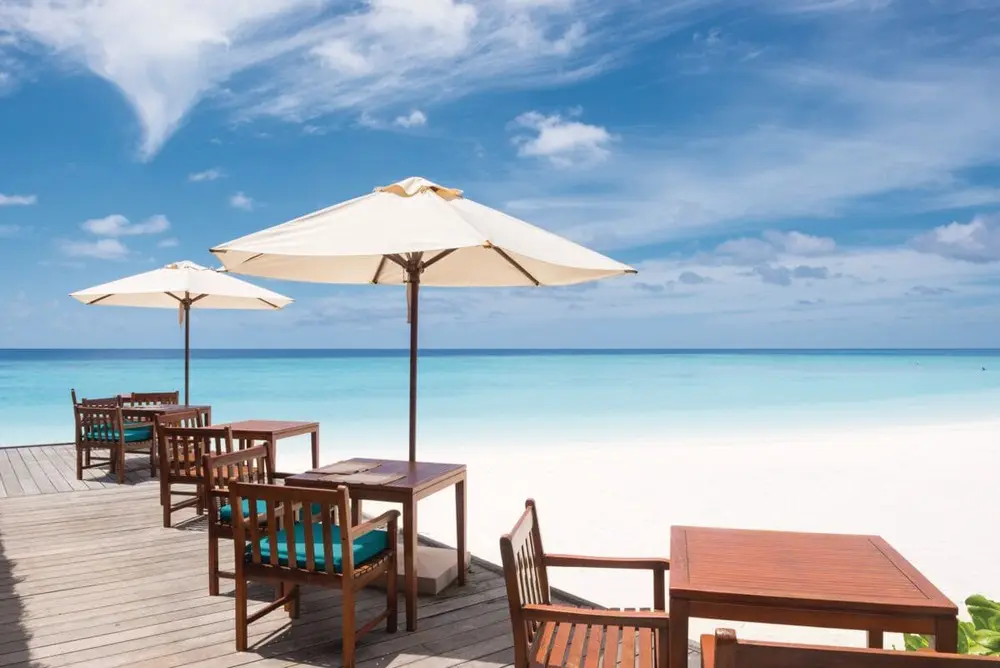
2. Disinfection water treatment in freshwater and saltwater lagoons
Disinfection is a critical part of the water treatment process, ensuring that the lagoon remains hygienic and free from harmful pathogens. The approach to disinfection varies depending on whether the lagoon uses freshwater or saltwater:
- Freshwater lagoons: Disinfection in freshwater lagoons is typically managed using chlorination systems similar to those employed in swimming pools. In addition to chlorine, UV disinfection systems are often installed to provide a secondary treatment layer. This dual approach ensures that the water is kept safe for users while maintaining water clarity.
- Saltwater lagoons: Saltwater lagoons rely on electrolysis to generate chlorine naturally from the salt dissolved in the water. This process is more environmentally friendly than traditional chlorination, eliminating the need for chemical storage and handling. Additionally, saltwater systems are often supplemented with UV treatment to enhance disinfection further while minimizing chemical use.
In both cases, the water is continuously monitored and adjusted through automated control systems, ensuring consistent water quality and compliance with local health regulations.
3. Water replenishment
To compensate for evaporation and maintain water levels, Fluidra’s lagoons incorporate an efficient system for water replenishment. Freshwater inputs are regulated to minimize waste and ensure the lagoon remains within optimal operational parameters. For saltwater lagoons, replenishment requires adding water and balancing salinity levels. This ensures the water remains comfortable for users and the system operates efficiently.
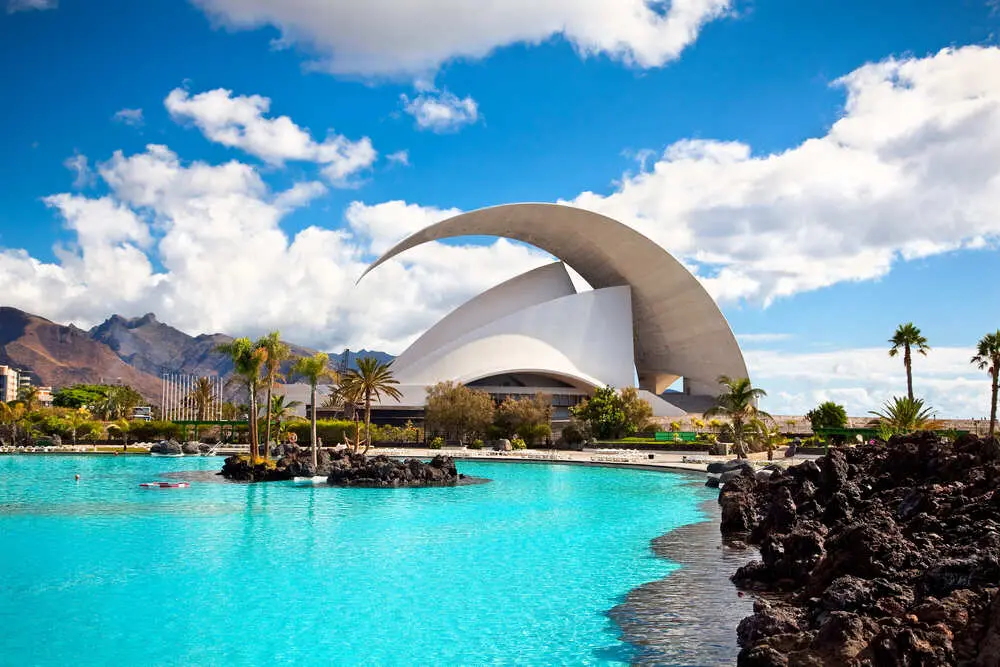
An aquatic paradise, as nature intended
Fluidra’s man-made lagoons are more than just picturesque bodies of water; they’re a harmonious blend of innovative technology, sustainable practices, and thoughtful design. By integrating cutting-edge water treatment systems, optimized piping layouts, and strategically located technical facilities, Fluidra ensures that these lagoons are as functional as they are beautiful.
Whether enhancing a hotel development or adding value to a real estate project, Fluidra’s man-made lagoons offer a high-end sustainable amenity. They transform any setting into an aquatic paradise, providing unparalleled recreational opportunities and contributing to a greener future. As the demand for environmentally responsible and aesthetically pleasing water features grows, Fluidra’s innovative solutions are poised to shape the future of aquatic landscapes.
